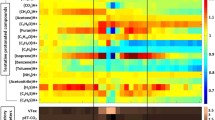Abstract
The real-time exhaled volatile organic compounds (VOCs) have been suggested as a new biomarker to detect and monitor physiological processes in the respiratory system. The VOCs profile in exhaled breath reflects the biochemical alterations related to metabolic changes, organ failure, and neuronal activity, which are, at least in part, transmitted via the lungs to the alveolar exhaled breath. Breath analysis has been applied to investigate cancer, lung failure, and neurodegenerative diseases. There are by far no studies on the real-time monitoring of VOCs in sensory stimulation in healthy subjects. Therefore, in this study we investigated the breath parameters and exhaled VOCs in humans during sensory stimulation: smell, hearing, sight, and touch. Responses sensory stimulations were recorded in 12 volunteers using an iAQ-2000 sensor. We found significant effects of sensory stimulation. In particular, olfactory stimulation was the most effective stimulus that elicited the greatest VOCs variations in the exhaled breath. Since the olfactory pathway is distinctly driven by the hypothalamic and limbic circuitry, while other senses project first to the thalamic area and then re-project to other brain areas, the findings suggest the importance of olfaction and chemoreception in the regulation lung gas exchange. VOCs variations during sensory activation may become putative indicators of neural activity.
Access this chapter
Tax calculation will be finalised at checkout
Purchases are for personal use only
Similar content being viewed by others
References
Ionescu R, Broza Y, Shaltieli H, Sadeh D, Zilberman Y, Feng X, Glass-Marmor L, Lejbkowicz I, Müllen K, Miller A, Haick H (2011) Detection of multiple sclerosis from exhaled breath using bilayers of polycyclic aromatic hydrocarbons and single-wall carbon nanotubes. ACS Chem Neurosci 2:687–693
Mazzatenta A, Di Giulio C, Pokorski M (2013a) Pathologies currently identified by exhaled biomarkers. Respir Physiol Neurobiol 187:128–134
Mazzatenta A, Pokorski M, Cozzutto S, Barbieri P, Veratti V, Di Giulio C (2013b) Non-invasive assessment of exhaled breath pattern in patients with multiple chemical sensibility disorder. Adv Exp Med Biol 756:179–188
Mazzatenta A, Pokorski M, Di Giulio C (2013c) Real-time breath analysis in type 2 diabetes patients during cognitive effort. Adv Exp Med Biol 788:247–253
Mazzatenta A, Pokorski M, Di Giulio C (2015a) Real-time volatile organic compounds (VOCs) analysis in centenarians. Respir Physiol Neurobiol 209:47–51
Mazzatenta A, Pokorski M, Sartucci F, Domenici L, Di Giulio C (2015b) Volatile organic compounds (VOCs) fingerprint of Alzheimer’s disease. Respir Physiol Neurobiol 209:81–84
Phillips M, Herrera J, Krishnan S, Zain M, Greenberg J, Cataneo RN (1999) Variation in volatile organic compounds in the breath of normal humans. J Chromatogr B Analyt Technol Biomed Life Sci 729:75–88
Solga SF, Risby TH (2010) What is normal breath? Challenge and opportunity. IEEE Sens J 10:7–9
Tisch U, Schlesinger I, Ionescu R, Nassar M, Axelrod N, Robertman D, Tessler Y, Azar F, Marmur A, Aharon-Peretz J, Haick H (2013) Detection of Alzheimer’s and Parkinson’s disease from exhaled breath using nanomaterial-based sensor. Nanomedicine (Lond) 8:43–56
Conflicts of Interest
The authors declare no conflicts of interest in relation to this article.
Author information
Authors and Affiliations
Corresponding author
Editor information
Editors and Affiliations
Rights and permissions
Copyright information
© 2015 Springer International Publishing Switzerland
About this chapter
Cite this chapter
Mazzatenta, A., Pokorski, M., Di Tano, A., Cacchio, M., Di Giulio, C. (2015). Influence of Sensory Stimulation on Exhaled Volatile Organic Compounds. In: Pokorski, M. (eds) Pathophysiology of Respiration. Advances in Experimental Medicine and Biology(), vol 884. Springer, Cham. https://doi.org/10.1007/5584_2015_176
Download citation
DOI: https://doi.org/10.1007/5584_2015_176
Published:
Publisher Name: Springer, Cham
Print ISBN: 978-3-319-24482-2
Online ISBN: 978-3-319-24484-6
eBook Packages: Biomedical and Life SciencesBiomedical and Life Sciences (R0)




